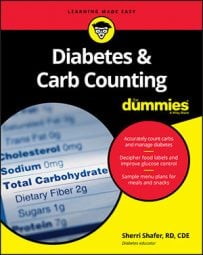Looking at the label lingo
Nutrition details are clearly marked on packaged foods. Look for the Nutrition Facts food label. First, identify the serving size. The calories, total carbohydrate, fiber, and everything else on the label refers to "one serving," not necessarily the whole package. Did you know that fiber isn't digestible so you can subtract it from the total carbohydrates to get a more accurate carb count?Sharpen your supermarket savvy and find out all about food labels. You can even take a sneak peek at the new look; the food label is undergoing a makeover.
Gathering carb-counting resources
Some of the most nutritious foods are harvested, not manufactured. Don't let the lack of a label keep you from reaching for wholesome foods. You can still closely estimate carbohydrate counts in fruits, vegetables, legumes, and grains with food composition lists. The Exchange List concept groups foods by macronutrient composition; the items on a list have similar amounts of carbohydrate, protein, and fat. Every item on the fruit list, for example, identifies a portion size that equals 15 grams of carbohydrate: A small apple or orange, 17 grapes, 1 cup of cantaloupe or raspberries, or 1/2 banana all provide the same amount of carbohydrate. Variety isn't only the spice of life; it's also a great way to assure you get a wide array of important nutrients.Measuring cups are essential for accuracy. Cooking from scratch? No problem! You also can figure out how to calculate carbs in your homemade recipes. Add tools to your carb-counting tool chest by tapping into online resources.
Increasing carb-counting accuracy
With type 1 diabetes, insulin doses must be carefully matched to carbohydrate intakes. Once you've mastered carb counting 101 (food labels and carb-counting lists), you're ready for more advanced carb-counting strategies.A food scale can verify exact carb counts on numerous foods, including fruits. By weighing foods occasionally, you'll hone your ability to accurately estimate carbs in the future. Weighing nails the carb counts in baked potatoes or a chunk of French bread.
Apps and web-based food databases offer nutrition facts on ethnic foods and combination foods, including pizza and lasagna. Weigh your food item — a tamale, for example — and then plug the weight of your tamale into the food database to get an exact carb count on the item you're about to eat. There is no need to do this for every food every time, but it sure helps to improve your ability to guestimate more accurately in the future.

